This is a preprint.
Early intermediates in bacterial RNA polymerase promoter melting visualized by time-resolved cryo-electron microscopy
- PMID: 38559232
- PMCID: PMC10979975
- DOI: 10.1101/2024.03.13.584744
Early intermediates in bacterial RNA polymerase promoter melting visualized by time-resolved cryo-electron microscopy
Update in
-
Early intermediates in bacterial RNA polymerase promoter melting visualized by time-resolved cryo-electron microscopy.Nat Struct Mol Biol. 2024 Nov;31(11):1778-1788. doi: 10.1038/s41594-024-01349-9. Epub 2024 Jul 1. Nat Struct Mol Biol. 2024. PMID: 38951624
Abstract
During formation of the transcription-competent open complex (RPo) by bacterial RNA polymerases (RNAP), transient intermediates pile up before overcoming a rate-limiting step. Structural descriptions of these interconversions in real time are unavailable. To address this gap, time-resolved cryo-electron microscopy (cryo-EM) was used to capture four intermediates populated 120 or 500 milliseconds (ms) after mixing Escherichia coli σ70-RNAP and the λPR promoter. Cryo-EM snapshots revealed the upstream edge of the transcription bubble unpairs rapidly, followed by stepwise insertion of two conserved nontemplate strand (nt-strand) bases into RNAP pockets. As nt-strand "read-out" extends, the RNAP clamp closes, expelling an inhibitory σ70 domain from the active-site cleft. The template strand is fully unpaired by 120 ms but remains dynamic, indicating yet unknown conformational changes load it in subsequent steps. Because these events likely describe DNA opening at many bacterial promoters, this study provides needed insights into how DNA sequence regulates steps of RPo formation.
Conflict of interest statement
Competing interests. The authors declare there are no competing interests. The authors declare no conflict of interest
Figures

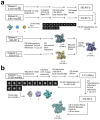
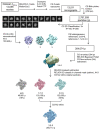
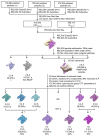


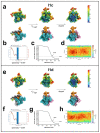

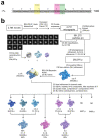

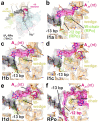
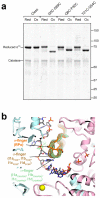

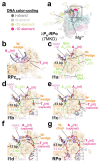
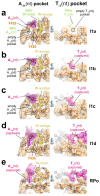
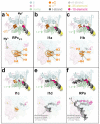


Similar articles
-
Early intermediates in bacterial RNA polymerase promoter melting visualized by time-resolved cryo-electron microscopy.Nat Struct Mol Biol. 2024 Nov;31(11):1778-1788. doi: 10.1038/s41594-024-01349-9. Epub 2024 Jul 1. Nat Struct Mol Biol. 2024. PMID: 38951624
-
Structural origins of Escherichia coli RNA polymerase open promoter complex stability.Proc Natl Acad Sci U S A. 2021 Oct 5;118(40):e2112877118. doi: 10.1073/pnas.2112877118. Proc Natl Acad Sci U S A. 2021. PMID: 34599106 Free PMC article.
-
Cryo-EM structure of Escherichia coli σ70 RNA polymerase and promoter DNA complex revealed a role of σ non-conserved region during the open complex formation.J Biol Chem. 2018 May 11;293(19):7367-7375. doi: 10.1074/jbc.RA118.002161. Epub 2018 Mar 26. J Biol Chem. 2018. PMID: 29581236 Free PMC article.
-
Initial events in bacterial transcription initiation.Biomolecules. 2015 May 27;5(2):1035-62. doi: 10.3390/biom5021035. Biomolecules. 2015. PMID: 26023916 Free PMC article. Review.
-
How to switch the motor on: RNA polymerase initiation steps at the single-molecule level.Protein Sci. 2017 Jul;26(7):1303-1313. doi: 10.1002/pro.3183. Epub 2017 May 12. Protein Sci. 2017. PMID: 28470684 Free PMC article. Review.
References
-
- Feklistov A., Sharon B. D., Darst S. A. & Gross C. A. Bacterial sigma factors: a historical, structural, and genomic perspective. Annual Review of Microbiology 68, 357–376 (2014). - PubMed
-
- Gruber T. M. & Gross C. A. Multiple sigma subunits and the partitioning of bacterial transcription space. Annual Review of Microbiology 57, 441–466 (2003). - PubMed
-
- Zhang G. et al. Crystal structure of Thermus aquaticus core RNA polymerase at 3.3 A resolution. Cell 98, 811–24 (1999). - PubMed
Publication types
Grants and funding
LinkOut - more resources
Full Text Sources
Research Materials
Miscellaneous
